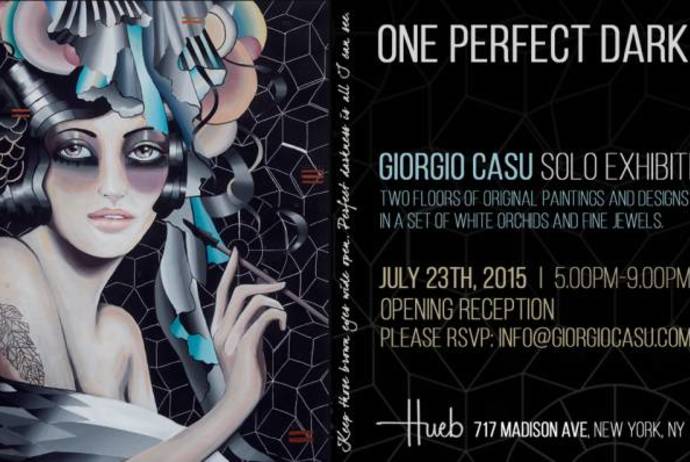Bellissima: Italy and High Fashion 1945 – 1968, a project by MAXXI: National Museum of the XXI Century Arts in Rome, is curated by Maria Luisa Frisa, critic, fashion curator and professor at IUAV University of Venice, Anna Mattirolo, MAXXI Arte Director and Stefano Tonchi, Editor-in-Chief of W magazine.
The exhibition at NSU Art Museum Fort Lauderdale is presented by Bulgari. Bellissima
recreates the alluring atmosphere of Italian high fashion during a time when designers such as Emilio Schuberth, Sorelle Fontana, Germana Marucelli, Mila Schön, Valentino, Simonetta, Roberto Capucci, Fernanda Gattinoni, Fendi, Renato Balestra, Biki, Irene Galitzine, Emilio Pucci, Fausto Sarli and many others made important contributions to the image of Italy around the world.
The exhibition also highlights the fluid relationship of fashion design with art, architecture, filmmaking and theater, and explores the roles that Rome, Florence, Milan and Venice played in the production and staging of fashion during this extraordinarily creative and productive time.
“This moment in history laid the foundation for Italy’s future ready-to-wear fashion, and the exhibition traces its beginnings within the social and cultural context,” said Stefano Tonchi. “The high fashion of that time was grounded in a strong sense of reality: They were luxury creations, but nonetheless practical; precious, embroidered textiles that had a certain simplicity; short cocktail dresses that allowed for movement; and warm, roomy coats accompanied by oversized handbags. This awareness of reality created an opportunity for a fashion system that truly served its patrons, with garments designed for the life of the modern woman.”
Featured will be more than 230 designer garments, that define the identity of Italian fashion, revealing its themes and distinguishing features -- from spectacular creations that lit up grand ballrooms and theaters, to elegant cocktail dresses, from the distinctive black and white graphic look, to the chromatic explosion of the 1960s, from creations made for the actresses of the so-called Hollywood on the Tiber (with outfits specifically designed for Ava Gardner, Anita Ekberg, Ingrid Bergman, Lana Turner, Kim Novak, Anna Magnani), to results of sophisticated formal research of collaborating couturiers and artists, along with suits and coats that depict luxury expressed as day wear.
Also featured will be accessories representing the exceptional Italian craftsmanship and innovation for which the “Made in Italy” brand became known, including costume jewelry, shoes, hats and handbags by such names as Coppola e Toppo, Ferragamo, Fragiacomo, Gucci and Roberta da Camerino.
Complementing the clothing and accessories will be a selection of one-of-kind jewels by Bulgari that showcase its innovation and experimentation during this key period.
Clothing, accessories and jewelry will be shown alongside art, film and photography in a dynamic installation.
The exhibition highlights the rise of Italian cinema and role of filmmakers such as Federico Fellini, whose La Dolce Vita, reinvigorated interest in Rome, Luchino Visconti and Michelangelo Antonioni, and international styles of artists such as Luciano Fontana, whose slashed canvases inspired fashion designer Mila Schön.
The years 1945 to 1968 were seminal to defining high fashion in Italy. In an effort to restore and stabilize the Italian post-World War II economy, significant financial investments were made to support and revitalize the Italian fashion industry. Drawing on a rich artistic and cultural history that was part of their everyday life, designers produced luxury creations that were also practical and helped reactivate textiles, silk and leather factories that provided jobs for skilled craftsmen. The factories were key to the revitalization of Italy’s economy after the war. Not only did the factories put skilled labor back in the workforce; the manufacturers were key advertisers in magazines, which promoted the new stylish and creative Italy.
A special section of the exhibition that premiered during its Fall 2015 presentation at the Villa Reale in Monza, Italy, and that will be on view at NSU Art Museum Fort Lauderdale, features a unique collection of textiles that underscores the importance of the Italian textile industry in design and promotion of Italian fashion in the past as well as today. Italy’s high fashion and its textile industry are closely linked, as is evidenced in the choice of daywear, one of its most successful expressions. Among the fashion archives represented in the textile section are: Agnona, Bedetti Pedraglio, Botto Giuseppe & Figli, Bozalla, Clerici Tessuto, Faliero Sarti, Lanerossi, Lanificio Fratelli Placenza, Lanificio G.B. Conte, Lanificio Trabaldo Piero Togna, Lanificio Zignone, Luigi Verga, Marzotto, Pria, Ratti Rivetti, Tallia di Delfino, Taroni, Valditevere.
Textile pattern and swatch books of the various and richly colored fabrics produced by Italy’s textile factories as well as fabrics themselves will be on display, along with research materials and photographs of models wearing clothing created from them.







































